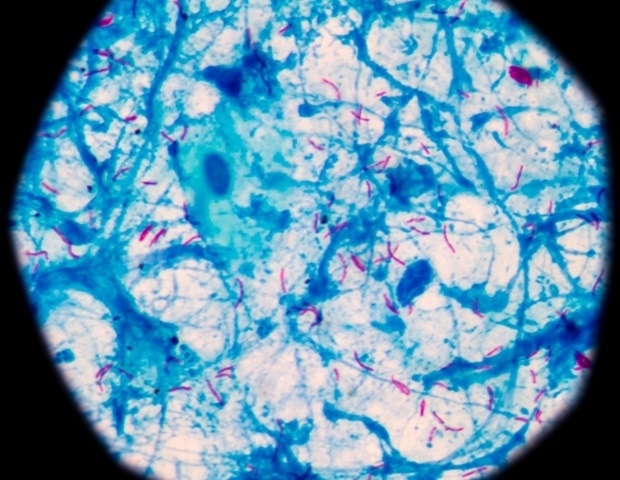A new strategy for tuberculosis (TB) screening, proposed by a team of researchers led by Queen Mary University of London, provides a solution to problems with current TB screening, which does not always accurately detect disease. Simultaneously screening for both active and dormant TB infection could save lives, curtail infection rates, and rewrite the story of the continued spread of this disease. Researchers hope that this new approach will inform guidance from global health organisations and key decision-makers on the most effective way to screen for TB.
TB is the deadliest infectious diseases globally, with 10.8 million new cases and 1.25 million deaths in 2023.

Effective screening for TB is an important intervention to quickly detect the disease, prevent its spread and ultimately eliminate the disease. TB can remain dormant in the body for some years without causing the symptoms of the disease but may cause active disease in the future especially among certain people at high risk. Accurate testing of both active and dormant infection is therefore of critical importance in screening programmes.
Testing for TB can take a range of forms, including chest x-rays, sputum cultures, molecular testing, screening for symptoms, and skin or blood tests to measure dormant TB infection (TBI). All types of tests aim to accurately detect TB with low numbers of false positive results to avoid unnecessary treatment. A team led by Dr Dominik Zenner, Clinical Reader in Infectious Disease Epidemiology at Queen Mary, analysed the efficacy of combinations of commonly used tests for TB.
Their study, published today in the European Respiratory Journal , examined data on 13 different TB tests as described in 437 original studies and published systematic reviews. These data were then used to estimate how good screening tests are at both correctly identifying TB and avoiding false positive results. Unlike previous studies, the researchers found that including some immunological tests for dormant TB infection (TBI tests) added value to TB screening algorithms.
TBI tests could also support earlier diagnosis of harder to detect TB, including extrapulmonary TB (disease that occurs outside the patient's lungs) or TB in children. This novel approach challenges existing protocols for TB testing, which reserve TBI tests for diagnosing dormant TB only. Importantly, combining diagnostic tests for both dormant and active TB would allow for both forms of the disease to be detected concurrently.
This opportunity to improve detection of TB across large populations is of interest to policy makers and public health organisations, including WHO and the European Centre for Disease Prevention and Control. Dr. Zenner said: "Global TB control requires early identification and treatment of TB in risk groups.
Our novel screening algorithms show that screening for active and dormant TB can be done simultaneously with high accuracy for migrants from countries where TB is common to improve individual and population benefits." This is a very sophisticated and well-thought study with major implications for clinical and public health practice, as well as policy change. By reviewing sound evidence and applying modern statistical methods, the authors have concluded that adopting an Interferon Gamma Release Assay (IGRA) test - a blood test that detects the response of white blood tests to TB antigens - on top of more traditional TB screening methods, the accuracy of screening migrants for active TB increases significantly.
" Mario Raviglione, former Director of the Global Tuberculosis (TB) Programme at the World Health Organization and currently Professor of Global Health at the University of Milan East London has the highest number of newly diagnosed TB cases in Western Europe with TB disproportionately affecting the most deprived populations. Researchers at Queen Mary are at the forefront of changing this picture, both locally and globally, and last month they partnered with Barts Health NHS Trust to form a new centre of excellence for TB research and treatment. Queen Mary University of London Zenner, D.
, et al. (2025). How to diagnose TB in migrants? A systematic review of reviews and decision tree analytical modelling exercise to evaluate properties for single and combined TB screening tests.
European Respiratory Journal . doi.org/10.
1183/13993003.02000-2024 ..
Health

New strategy for TB screening aims to save lives

A new strategy for tuberculosis (TB) screening, proposed by a team of researchers led by Queen Mary University of London, provides a solution to problems with current TB screening, which does not always accurately detect disease.















